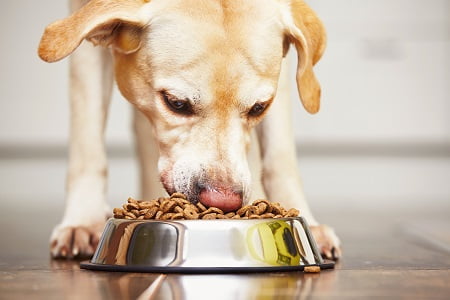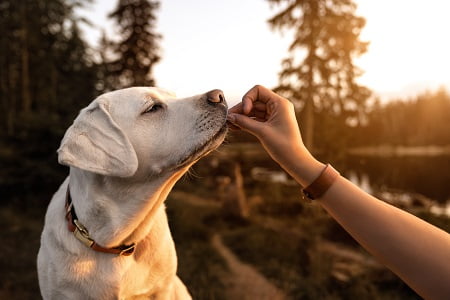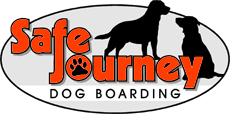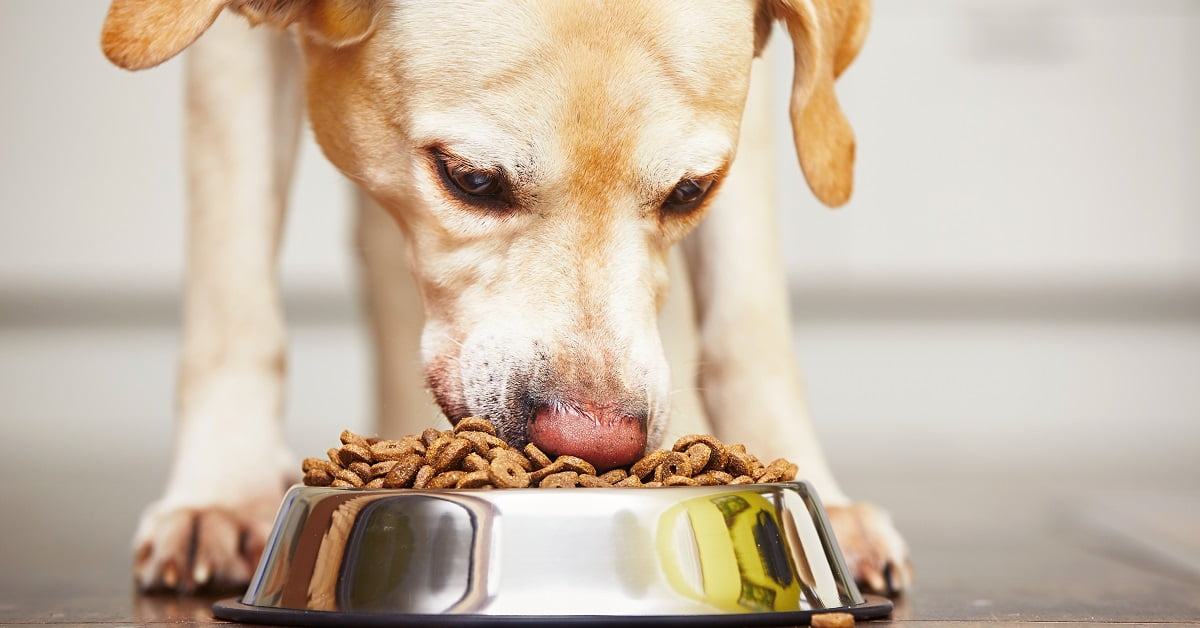We all know the importance of feeding our dogs and how it impacts their health, happiness and longevity. But with so many options out there, it can be hard to make the best decision for your pup. This post will talk about what you need to know when deciding on dog food and how to store and prepare that food for your furry friend. For first-time dog owners, newfound puppy caretakers and longtime pet lovers that want to refresh their knowledge, Safe Journey Dog Boarding has compiled some tips and resources to help you make healthy decisions for your lovable mutt.
Who Should I Talk To About My Dog’s Diet?

It goes without saying: we are not a veterinary clinic. When it comes to figuring out what’s best for your dog’s nutrition, asking a professional veterinarian takes precedence. Thorough research holds no candle to a licensed professional.
Find out your dog’s weight, height, and activity level at maturity.
Before deciding your dog’s dietary needs, you will need to determine your dog’s weight, height and activity level. While at the veterinary clinic, you should talk with your dog’s veterinarian to approximate what weight, height and activity level your dog will most probably have at maturity after reaching one year of age. Finding out how much your dog will weigh is significant, if more complicated, with crossbred dogs. However, knowing the genetic mix of your dog will help you predict how heavy and how active they will be later in their life. This information can help you plan how much food and what nutrients they will need at each stage of their life.
Consult with your vet to determine the appropriate portion sizes for each meal
If you are feeding your pup for the first time, consult with your veterinarian or breeder about how much he should eat at each meal. They should have feeding guidelines to follow. Having a feeding plan or feeding schedule can also help give your dog lifelong health.
After you determine the measurements of your dog, several websites provide tools to help you plan your dog’s daily diet. Purina provides charts with cup measurements for puppies and adult dogs. These tools will help you plan how many calories your dog requires per day. It’s generally recommended to supply a 50/50 split of dry food and wet food for your pup. This will help maintain a healthy weight gain or loss, depending on your dog’s ideal weight.
Research what ingredients are in that type of food and if they’re healthy for your dog
Find out what your dog requires in the way of vitamins and minerals, what allergens your pup might have, and any potential to cause health problems for specific breeds. We do not recommend using supplements without consultation because they could interfere with the effectiveness of other essential nutrients in your dog’s diet plan. If you are considering supplements, talk to your veterinarian.
The American Kennel Club (AKC), Dog Food Insider and Pet Food Ratings provide excellent online resources for determining what should and should not be high-quality dog food. It might seem like a lot of work to calculate and cross-reference the AKC rating with the Pet Food Ratings grade, but you usually have to do it yourself when you want something done right. If nothing else, your pet’s veterinarian should also have recommendations and advice on food products. Take their expertise into consideration when researching what ingredients are inside which brand.
If you plan to switch foods for your dog, do so gradually over 8-10 days. During this time, mix increasing amounts of the new food with decreasing amounts of the old food and adjust the proportions until the transition is complete. Try to minimize the number of times you switch your dog’s food. Otherwise, you run the risk of wasting money on food your dog will not like.
Give them treats occasionally as long as they are healthy choices (e.g., carrots)

Treats are frequently the bane of a healthy dog’s diet. Those puppy-dog eyes developed specifically to crack an owner’s resolve. If not careful, anyone can give that loveable mutt more treats than they probably deserve. They might even receive the odd table scrap. Eventually, the dog will come to understand that looking cute means more “people food.” What most dogs won’t understand are the health issues and health conditions that come with too much improper nutrition.
This doesn’t mean you cannot indulge your dog with some people’s food and maintain a balanced diet. What most veterinarians recommend is a 90/10 split. That means 90% healthy food and 10% treats. While dogs can have some human foods, make sure they are healthy snacks. Carrots and broccoli make for great dog treats, but the AKC also provides a list of fruits and vegetables any dog can eat.
The treats to avoid giving your dog include avocados, grapes, onions, mushrooms and tomatoes. You should avoid giving your dog chocolate as well. These foods contain toxins that a dog’s digestive system cannot handle, leading to injury or death. If you’re unsure whether a piece of food is safe for your dog’s consumption, refer to the AKC list!
Looking For Licensed Dog Handlers in Portland?
Now that you know the basics of planning your dog’s diet, it’s time to find the proper dog handlers that can work with your dog’s dietary needs when you are away on vacation or a business trip. Sometimes you can’t take your dog on every voyage, and you need someone to care for them when you are gone. Trust in Safe Journey Dog Boarding to be those caretakers. Our 3000 square foot facility has no cages to encourage freedom and sociability with a second family of pups and caretakers. Contact us today to see our availability!

